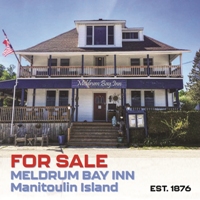
Here’s an important article for homeowners close to the Niagara Escarpment and other natural spaces, on the dangers of Giant Hogweed. We published an article on this invasive plant in Autumn 2008. The problem continues. See what Conservation Halton advises here.
There are many invasive species that can threaten the native plants in your garden, but probably one of the best publicized is Giant Hogweed (Heracleum mantegazzianum). The notoriety is due to its tremendous height and the dangers from its sap which has created plenty of public attention.
Giant Hogweed has two major negative impacts. Firstly, due to its invasive nature, it poses a threat to native biodiversity. Secondly, Giant Hogweed is a public health hazard. It produces a noxious sap that sensitizes the skin to ultraviolet light. This is known as photosensitivity, which can result in severe and painful burning and blistering. It is important to avoid any skin contact with this plant.
If you have seen Giant Hogweed on your property, then now is the time to investigate, see if any small hogweed plants are coming up, and take steps to control or eradicate them. Late in the summer, when Giant Hogweed is a giant plant with big white flowers, it is easy to spot, but that is not necessarily the ideal time to try and control it. In fact, you could be putting yourself at significant risk, from the sap in the plant’s stem and leaves. Right now in the spring, when the plants are just starting to grow, is the best time to try and control it, and prevent it from producing seeds.
If you are considering doing the removal yourself, it is very important to wear proper protective clothing (waterproof fabric with long sleeves, high shoes, gloves, face and eye protection), so as to avoid skin contact with the sap. If you have a small patch of Giant Hogweed, then you can dig the plants up, but be sure the entire root is removed, and check the area again in two weeks for any re-growth.
Alternatively, if you have a large infestation, other control methods will need to be considered. In some cases, a herbicide used according to the label, and by a certified professional, is the best method of controlling this invasive plant.
Even if you undertook removal, or control, late last year, there likely will still be seedlings sprouting this year. To control an invasive species like hogweed you must be vigilant and return to the site to ensure control has been effective.
Giant Hogweed is known for its enormous size, reaching heights of 2.5 to 4m (8 to 14ft), with leaves up to 1m (3 ft) in breadth. It has a thick, 5 to 10cm (2 to 4in) hollow stem. Its stem and the undersides of its leaves are covered in coarse hairs. Its large, umbrella-shaped flowers are white in colour and can be more than 30cm (1ft) in diameter.
With the heightened public attention given to Giant Hogweed over the last few summers, Conservation Halton received numerous ‘reports’ of Giant Hogweed that were actually a smaller, harmless plant that has a similar (but greatly smaller) white flower called Queen Anne’s Lace. If you are unsure whether you have Giant Hogweed, feel free to seek confirmation from an expert. At Conservation Halton, you can contact Brenda Van Ryswyk, by phone 905-336-1158, ext. 282, email brendav@hrca.on.ca or use the invasive species reporting form found on our website.
For general inquiries, questions on invasive species or to report a sighting anywhere in the province, you can use the Invasive Species Hotline: 1-800-563-7711. For more information on Giant Hogweed, some tips on its control, and other invasive species, please visit Conservation Halton’s website, www.conservationhalton.ca/invasivespecies.




